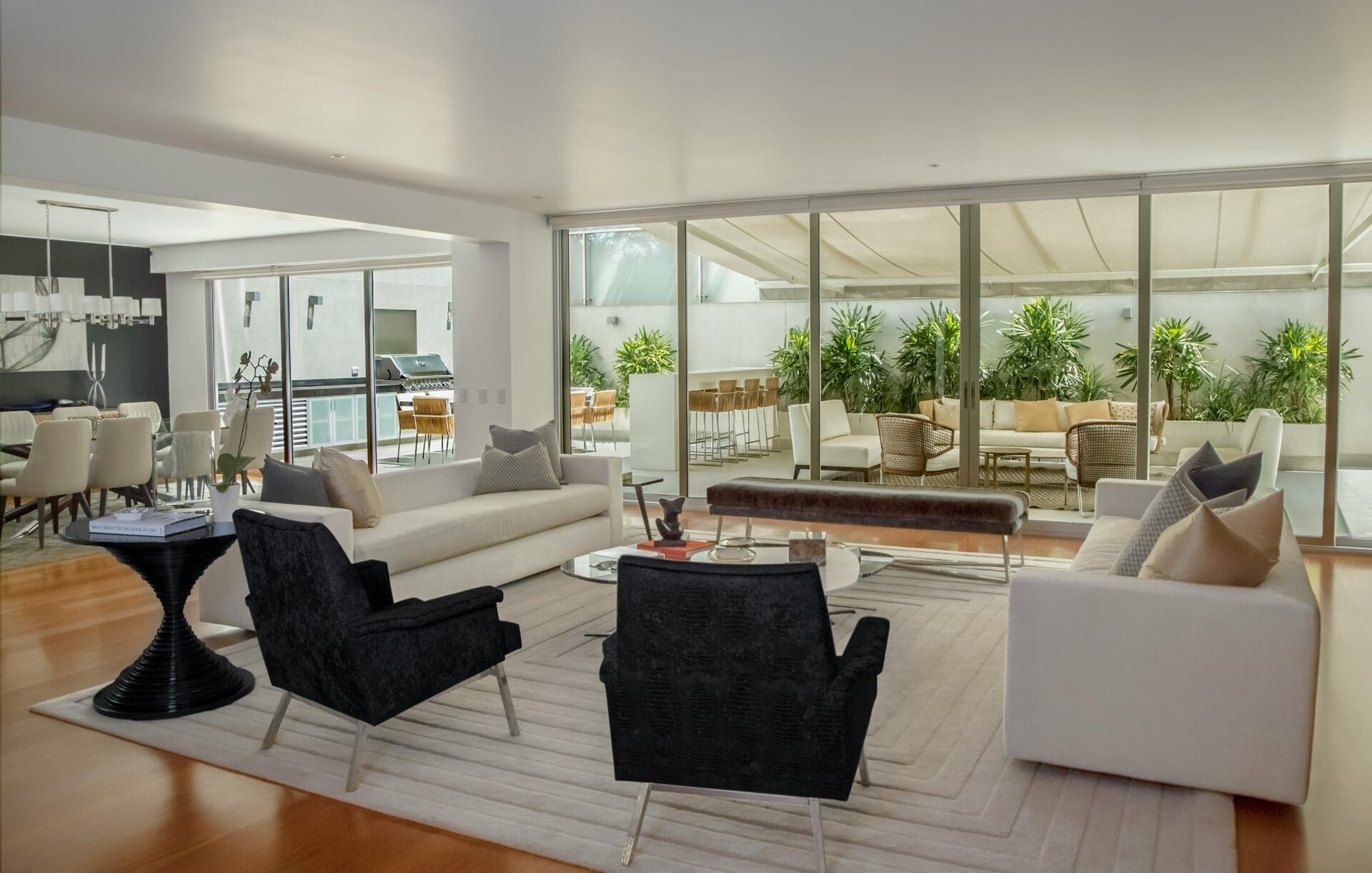Introduction to Restaurant Furniture
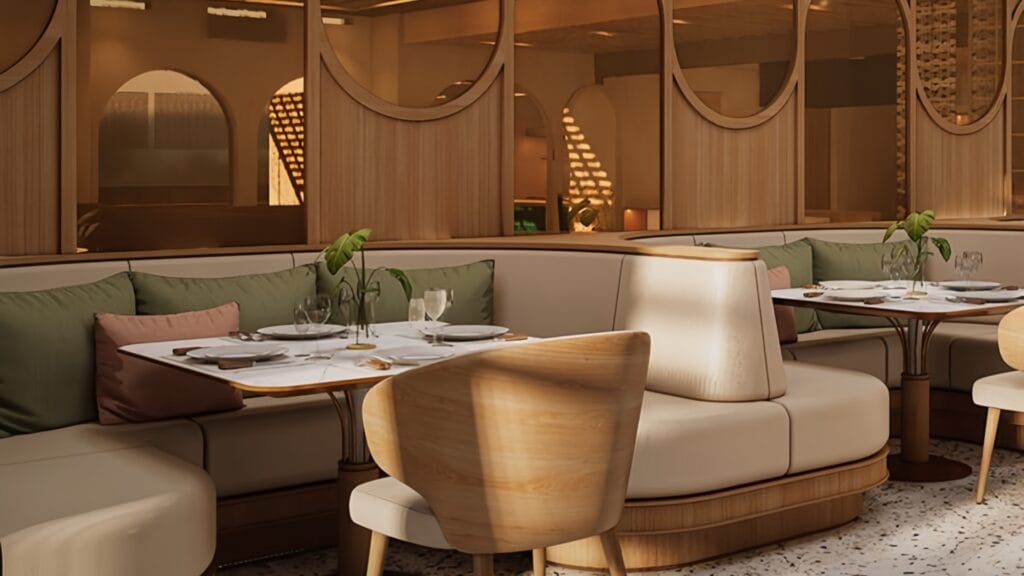
Selecting the appropriate restaurant furniture is a critical decision for any restaurant or café owner. The furniture chosen not only defines the ambiance of the space but also significantly impacts the customer experience. Well-designed commercial dining furniture fosters a welcoming atmosphere, encouraging patrons to linger and enjoy their meals. In contrast, poorly selected furniture can lead to a less-than-optimal dining experience, ultimately affecting customer satisfaction and retention.
The variety of options available, including restaurant booth seating, outdoor restaurant furniture, and café furniture, presents a unique challenge to restaurateurs. Each piece must align with the overall brand identity while ensuring functionality and comfort. For instance, vibrant and modern seating might attract a younger audience, while classic wooden tables could appeal to more traditional clients. The alignment of furniture with brand representation creates a stronger emotional connection with customers, enhancing their visit.
Moreover, the layout and arrangement of furniture in a dining area are vital components that facilitate smooth service and optimum space utilization. Considerations such as table spacing are crucial, as they influence not only the flow of service but also patrons’ comfort. Balancing the need for adequate seating with maintaining a spacious environment requires thoughtful planning. Outdoor restaurant furniture further complicates this as it must withstand various weather conditions while still providing comfort and style.
Ultimately, the selection process involves numerous factors, including style, durability, and customer demographics. Each choice can impact both the aesthetic appeal of the restaurant and the practicality of operations. Making informed decisions regarding restaurant furniture is essential in enhancing the overall dining experience and ensuring long-term success.
Determining Your Restaurant’s Style
Choosing the right furniture for your restaurant or café is a crucial step in establishing a memorable dining experience. Each restaurant has its unique theme and target audience, which greatly influences the selection of restaurant furniture. By identifying your restaurant’s style, you can create a cohesive atmosphere that resonates with your customers and aligns with your brand identity.
Contemporary style, characterized by clean lines and modern aesthetics, often calls for sleek restaurant booth seating and minimalist café furniture. Such designs tend to attract a younger, urban clientele seeking a sophisticated dining environment. Conversely, if your restaurant adopts a rustic theme, opting for wooden tables with a weathered finish can evoke warmth and coziness. These choices inspire comfort and familiarity, appealing to families and patrons looking for a casual dining experience.
Industrial style, featuring raw materials such as metal and reclaimed wood, adds an edginess to your establishment. This approach suits establishments targeting a fashionable crowd and often incorporates unique features like bar-height dining tables and vintage lighting fixtures. Depending on your location, outdoor restaurant furniture plays a vital role in expanding your seating options while complementing the overall aesthetic. Consider the surroundings, as well as seasonal trends, to enhance the dining experience.
For those envisioning a vintage style, select commercial dining furniture that reflects nostalgia, such as retro diner booths or patterned upholstery. This choice captivates customers who enjoy reminiscing over classic dining experiences. In aligning your furniture selection with your restaurant’s concept, take the time to analyze your brand identity and the preferences of your target audience. Thoughtful decisions in furniture choice can significantly influence patron perception and overall success.
In conclusion, determining your restaurant’s style is key to selecting the appropriate commercial furniture. By assessing your theme and audience, you can create an inviting atmosphere that caters to your customers’ preferences while effectively conveying your brand message.
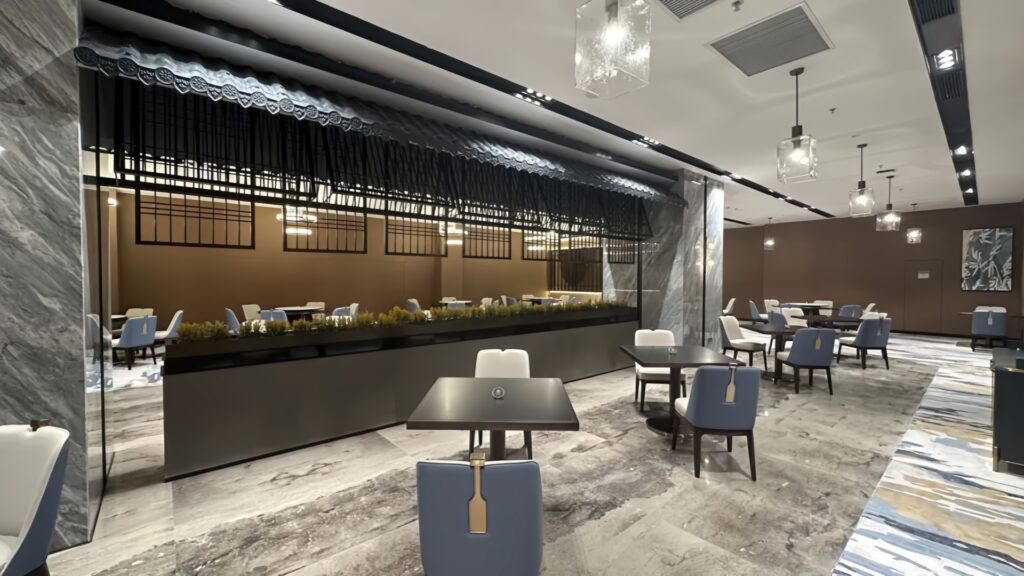
Choosing Durable Furniture Materials
When selecting restaurant furniture, the materials used play a crucial role in ensuring durability, aesthetic appeal, and maintenance efficiency. Different materials offer various benefits, making it imperative to choose wisely based on the specific needs and atmosphere of your establishment.
Wood is a classic choice for commercial dining furniture, renowned for its natural beauty and enduring strength. Hardwoods, such as oak or maple, can withstand significant wear and tear and offer an appealing look when properly finished. However, wood requires regular maintenance, such as polishing and protective treatments, to maintain its luster and resist damage from spills and scratches.
Metal is another popular option for restaurant booth seating and tables. Materials like steel or aluminum provide excellent durability and can be easily cleaned, making them suitable for high-traffic areas. Metal furniture often features sleek designs, catering to modern aesthetics. However, one must consider the risk of rusting, especially in outdoor settings, where protective coatings should be applied to prevent deterioration.
Plastic furniture is famed for its versatility and cost-effectiveness. Available in various colors and styles, plastic options can enhance the visual appeal of outdoor restaurant furniture. Moreover, they are lightweight, resistant to moisture, and require minimal maintenance. Nevertheless, it’s essential to select high-quality plastic that can resist fading and cracking under UV exposure.
Upholstery also deserves attention, primarily regarding comfort and style. Upholstered furniture allows for various fabric choices that can complement the café’s design while providing guests with comfort. However, materials prone to staining should be avoided; instead, opt for durable, stain-resistant upholstery for longevity.
In selecting durable materials for your café furniture, consider a combination of aesthetics, maintenance requirements, and expected wear and tear to ensure that your investment stands the test of time while enhancing the overall dining experience.
Comfort and Functionality
When selecting restaurant furniture, particularly commercial dining furniture, prioritizing comfort and functionality is vital for creating a positive dining experience. Customers are more likely to return to a restaurant where they can enjoy their meal comfortably. The comfort of seating, such as restaurant booth seating or chairs, directly impacts how long guests wish to linger over their meals, influencing their overall satisfaction and repeat patronage. Ensuring that your seating arrangements cater to both comfort and style can lead to increased customer retention rates.
Moreover, the functionality of your restaurant furniture cannot be overlooked. It is essential to choose pieces that facilitate easy movement, allowing staff to navigate efficiently while attending to guests. For instance, selecting café furniture that is lightweight yet sturdy promotes practicality as well as flexibility in your layout. Consider arrangements that support a smooth dining flow, ensuring that guests can move easily from the entrance to seating areas without obstructions. This not only enhances customer experience but also makes it more convenient for your staff to serve, contributing to overall operational efficiency.
Balancing style with practicality is crucial when choosing outdoor restaurant furniture, particularly if your establishment features al fresco dining. Furniture should not only complement the aesthetic of your venue but also be durable enough to withstand varying weather conditions. Additionally, ensure that any materials used can provide adequate comfort for patrons. Ultimately, investing in high-quality, functional restaurant furniture can greatly enhance your customers’ dining experiences, while supporting the seamless flow of service within your establishment.
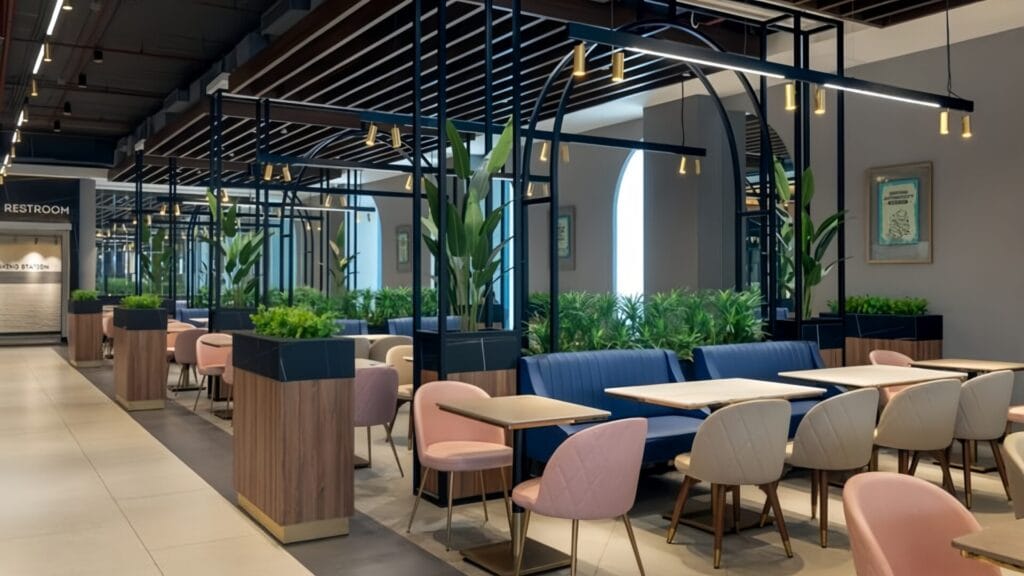
Space Planning and Layout Considerations
When embarking on the journey of selecting restaurant furniture, understanding the significance of space planning and layout is crucial. An effective layout not only enhances the aesthetic appeal of the establishment but also contributes to a pleasant dining experience, which can, in turn, influence customer satisfaction and return visits.
To begin with, accurately measuring the space is paramount. This includes the total area available for both indoor and outdoor restaurant furniture. By obtaining precise measurements, it becomes easier to identify the appropriate dimensions for tables, chairs, and restaurant booth seating. The selection of furniture must accommodate not just the physical space, but also the intended ambiance of the restaurant or café, ensuring it is appealing while remaining functional.
Another significant aspect of space planning is understanding customer traffic flow. A well-thought-out layout enables easy movement for both patrons and staff, reducing congestion during peak dining hours. It is essential to create pathways that allow diners to navigate comfortably without feeling cramped, particularly in busy environments. Spaces should be allocated for entrance and exit points, ensuring that customers can enter and leave without obstruction.
Moreover, spacing between tables and seating must be considered carefully. Adequate distance helps individuals enjoy their meals without the distraction of adjacent conversations. This is particularly important in restaurants aiming to foster a relaxed atmosphere. Customizing the arrangement of café furniture or restaurant booth seating can aid in creating intimate dining areas or accommodating larger groups as needed.
Lastly, don’t overlook the impact of outdoor spaces. The integration of outdoor restaurant furniture should complement the overall layout, maximizing the use of available space while providing a comfortable environment for alfresco dining. By thoughtfully planning the space, restaurant owners can enhance guest experiences, thereby driving the success of their establishments.
Selecting Versatile and Multi-functional Furniture
In the ever-evolving landscape of restaurant design, the importance of selecting versatile and multi-functional furniture cannot be understated, particularly in environments constrained by limited space. The right choices in restaurant furniture can optimally facilitate both functionality and aesthetics, ensuring that the dining experience remains pleasant for patrons while allowing for efficient use of available space.
One effective option is the use of foldable tables. These tables provide the ability to swiftly adapt dining areas to accommodate varying group sizes and events. Whether for an intimate dinner for two or a larger gathering, foldable tables enable restaurant owners to maximize their dining area, transforming it from a cozy café setting to a bustling dinner service efficiently. The ability to reposition and store these tables creates additional room for movement during busy times, enhancing customer flow and operational efficiency.
Stackable chairs are another excellent choice for commercial dining furniture. These chairs offer not only space-saving advantages but also ease of storage. When not in use, they can be stacked away, freeing up valuable floor space. This attribute is particularly beneficial in establishments where the layout frequently changes to accommodate different customer needs or events. They come in various designs, allowing for both style and comfort while ensuring practicality.
Convertible booths represent yet another innovative solution for maximizing restaurant space. These can transform from traditional booth seating into open tables, allowing diners the flexibility to modify their seating arrangement according to their preferences. Such adaptability adds a unique element to the dining environment, appealing to diverse customer preferences and various occasions.
In conclusion, selecting versatile and multi-functional furniture, such as foldable tables, stackable chairs, and convertible booths, can significantly enhance the adaptability and flexibility of a restaurant’s interior. These choices not only optimize spatial utilization but also contribute to an improved overall dining experience. The thoughtful selection of outdoor restaurant furniture can further expand the potential of the space, accommodating customer needs and preferences seamlessly.
Outdoor Furniture Considerations
When selecting furniture for outdoor dining areas in restaurants and cafés, several factors must be taken into account to ensure that the furniture is not only visually appealing but also functional and durable. Outdoor restaurant furniture must withstand varying weather conditions, which necessitates the careful selection of materials. Furniture made from aluminum, teak, or synthetic wicker is often preferred due to its resistance to rust, moisture, and fading caused by sunlight. These materials not only ensure longevity but also require less maintenance, making them a practical choice for restaurant owners.
Comfort is another key consideration when choosing outdoor furniture. Since dining outside is often associated with leisurely meals or social gatherings, restaurant booth seating that prioritizes comfort can significantly enhance the guest experience. Cushions made from quick-drying foam and outdoor-grade fabrics can provide added comfort while resisting mold and mildew, which is crucial in humid environments. Furthermore, selecting ergonomic designs encourages patrons to linger, which can ultimately increase turnover rates during peak dining hours.
The aesthetic impact of outdoor restaurant furniture should not be overlooked. Attractive and well-coordinated café furniture can create a welcoming atmosphere, drawing in customers and encouraging them to enjoy their meals in an alfresco setting. Incorporating elements such as vibrant colors or unique designs can reflect the overall theme of the establishment, making it memorable for guests. Consider integrating decor elements such as planters or string lighting to enhance the ambiance further and create an inviting outdoor space that encourages diners to relax and unwind.
Ultimately, when considering outdoor furniture, restaurant owners should aim for a balance between durability, comfort, and aesthetic appeal to create an inviting and enjoyable alfresco dining experience.
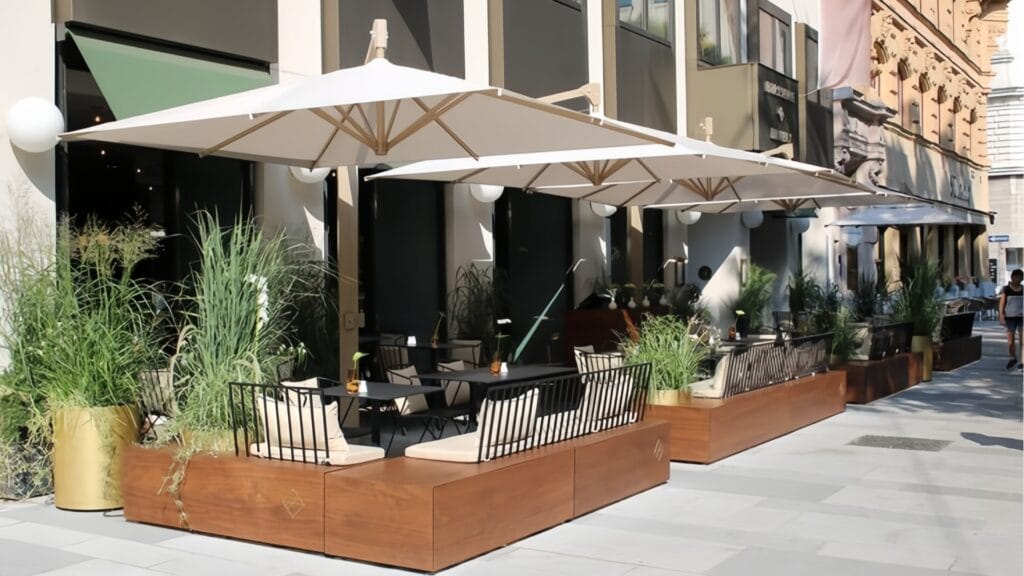
Budgeting for Commercial Furniture
Successfully budgeting for restaurant furniture is a critical aspect that restaurant and café owners must tackle to ensure they create an inviting and functional space without overspending. The first step in this process is to establish a clear vision of the restaurant’s aesthetic and functional needs. This helps narrow down the options regarding what type of commercial dining furniture will not only be visually appealing but also meet operational demands.
When considering cost-effective options, it is essential to analyze the entire lifecycle of the restaurant booth seating and other furniture choices. While some pieces may appear costly initially, investing in durable and well-crafted items can yield significant savings over time due to reduced replacement and maintenance costs. Therefore, seeking quality brands that specialize in outdoor restaurant furniture may prove beneficial, especially for establishments that wish to maximize their outdoor seating capabilities.
Moreover, exploring various financing solutions can also be advantageous. Many furniture suppliers offer flexible payment plans or leasing options that can alleviate the immediate financial burden while still allowing access to high-quality café furniture. This approach enables restaurant owners to furnish their space without delaying the grand opening or sacrificing quality due to budget constraints.
It is important to find a balance between quality and affordability. Scrimping on furniture may lead to higher long-term costs through replacements and repairs, while splurging without a plan may strain the budget. Therefore, taking the time to conduct thorough research and scouting for sales or discounted rates can provide the best of both worlds, ensuring that every dollar spent on commercial furniture brings value and enhances the overall dining experience.
Sustainability and Eco-friendly Options
The trend towards sustainability is becoming increasingly significant in the restaurant and café industry, influencing various aspects of business operations, including furniture selection. As consumers become more environmentally conscious, restaurant owners must consider how their choices reflect not only their values but also their customers’ preferences. Investing in sustainable options for restaurant furniture can enhance the overall dining experience while promoting eco-friendly practices.
Choosing furniture made from eco-friendly materials is a vital step in creating a sustainable environment. Materials such as reclaimed wood, recycled metals, or sustainably sourced materials significantly reduce the carbon footprint associated with production. For instance, opting for restaurant booth seating crafted from reclaimed wood not only adds character but also contributes to the preservation of forests. Furthermore, using manufacturers that prioritize eco-friendly production processes ensures that your commercial dining furniture adheres to sustainability standards, thereby appealing to a growing demographic of environmentally aware patrons.
Sourcing furniture locally is another critical aspect of sustainable practice. By choosing local suppliers for outdoor restaurant furniture and café furniture, restaurant owners can reduce transportation emissions and support the local economy. This decision creates a positive ripple effect, fostering community relationships and promoting a brand image that values sustainability. Practicing mindfulness in sourcing also facilitates the use of durable materials, prolonging the lifespan of your commercial furniture, and thereby reducing waste in landfills.
Lastly, incorporating sustainable practices into the lifecycle of your restaurant furniture is crucial. Regular maintenance and repairs can extend the furniture’s usability, delaying the need for replacements and thereby conserving resources. In conclusion, the integration of eco-friendly options into restaurant furniture selection not only aligns with growing consumer demand but also positions restaurants and cafés as leaders in environmental responsibility.

